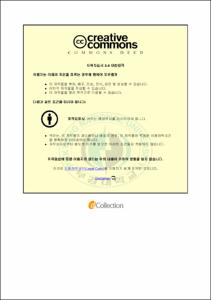Alloy 617 모재와 용접부재의 저사이클피로 거동
- Alternative Title
- Low Cycle Fatigue Behavior of Alloy 617 Base Metal and Weld Joints
- Abstract
- The Very High Temperature Reactor (VHTR) is one of the promising fourth generation (Gen-IV) reactor whose product is cost effective electricity and hydrogen. The conceptual design requires an outlet temperature of greater than 850℃ to provide for the efficient generation of hydrogen, with a maximum expected outlet temperature of 950℃. A critical component in VHTR system is the Intermediate Heat Exchanger (IHX), which will be required to operate at the reactor outlet temperature of up to 950℃. The material needs not only the characteristics of high temperature creep and oxidation resistance but also the characteristic of good thermal stability for a long period of running time. Material selection for the IHX is critical, regardless of the design.
Based on these material requirements, the nickel-based superalloy, Alloy 617, also designated as Inconel 617 or UNS N06617 is the leading VHTR IHX candidate alloy. The Alloy 617 has high temperature oxidation resistance, structural stability and excellent high temperature characteristics (strength, creep and creep-fatigue) for heat exchanger, inner structure, etc.
Alloy 617 has excellent weldability using Alloy 617 filler metal. The weld joints (WJ) characteristics information is primary necessary from practical application point of view, because the structural materials are normally joined by welding techniques. There are many methods of welding available and one among them is the Gas Tungsten Arc Welding (GTAW) method, which is used in this study. The reactor operations, as well as startups and shutdowns, and power transmissions leads to Low Cycle Fatigue (LCF) loading. Therefore, it is important to understand the high temperature LCF information of the GTAWed Alloy 617. A lot of research is carried out on the Alloy 617 material at the international level when compared to Korea, where only a handful of them is carried out. Especially the research on the weld joint seems to be rare in Korea.
Therefore, the objective of this study is to investigate the cyclic stress response behavior and the fracture behavior for Alloy 617 base metal (BM) and the weld joints (WJ) under strain controlled low cycle fatigue loading. In this study, fully reversed strain controlled low cycle fatigue testing was completed on Alloy 617 BM and the WJ at a total strain range of 0.6, 0.9,m 1.2 and 1.5% in air at room temperature. A triangular waveform was used for LCF testing. Test was completed to final fracture of the specimen. The focus of this paper is on the low cycle fatigue (LCF) behavior of Alloy 617 base metal and the weld joints at room temperature. The key conclusions are drawn as follows:
The cyclic stress response behavior was influenced by the level of total strain range and the material property. For both the BM and the WJ, cyclic stress response reveals initial hardening during first small number of cycles. In terms of the total number of cycles to failure, the observed fatigue life of the BM is longer than the WJ, even though the BM have shown higher plastic strain accumulation, and the fatigue life of both the BM and the WJ is decreased with increasing the total strain range. The macroscopic fracture pattern was revealed flat pattern for the BM, however the WJ showed star/shear pattern. Ans also, crack initiation and propagation was found to be transgranular failure mechanism in both the BM and the WJ.
- Issued Date
- 2014
- Awarded Date
- 2014. 8
- Type
- Dissertation
- Publisher
- 부경대학교
- Alternative Author(s)
- Choi, Pil Ho
- Affiliation
- 대학원
- Department
- 대학원 기계설계공학과
- Advisor
- 김선진
- Table Of Contents
- 목 차
Abstract iii
제 1 장 서 론 1
1.1 연구의 배경 및 필요성 1
1.2 연구의 목적 3
제 2 장 이론적 배경 4
2.1 가스텅그스텐아크(GTA) 용접 4
2.2 저사이클피로(LCF) 모델 6
2.3 변형률-수명 접근방법 8
2.3.1 단순 응력-변형률 거동 8
2.3.2 반복 응력-변형률 거동 10
2.3.3 반복 변형률 경화와 연화 13
제 3 장 실험 방법 및 절차 15
3.1 재료 및 시험편 15
3.1.1 실험 재료 (Alloy 617) 15
3.1.2 GTAW 용접조건 16
3.1.3 시험편 채취 및 제작 18
3.2 실험 장비 및 방법 19
3.2.1 실험 장비 19
3.2.2 실험조건 및 방법 21
제 4 장 실험 결과 및 고찰 23
4.1 반복 응력 반응 거동 23
4.1.1 반복 응력 피크치 24
4.1.2 응력 진폭 28
4.1.3 히스테리시스루프 곡선 38
4.2 저사이클피로의 파면해석 46
제 5 장 결 론 59
참고문헌 61
감사의 글 64
Appendix A. 65
Appendix B. 71
- Degree
- Master
- Files in This Item:
-
-
Download
 Alloy 617 모재와 용접부재의 저사이클피로 거동.pdf
기타 데이터 / 15.62 MB / Adobe PDF
Alloy 617 모재와 용접부재의 저사이클피로 거동.pdf
기타 데이터 / 15.62 MB / Adobe PDF
-
Items in Repository are protected by copyright, with all rights reserved, unless otherwise indicated.